Understanding Frozen Shoulder: A Common Cause of Shoulder Pain
|
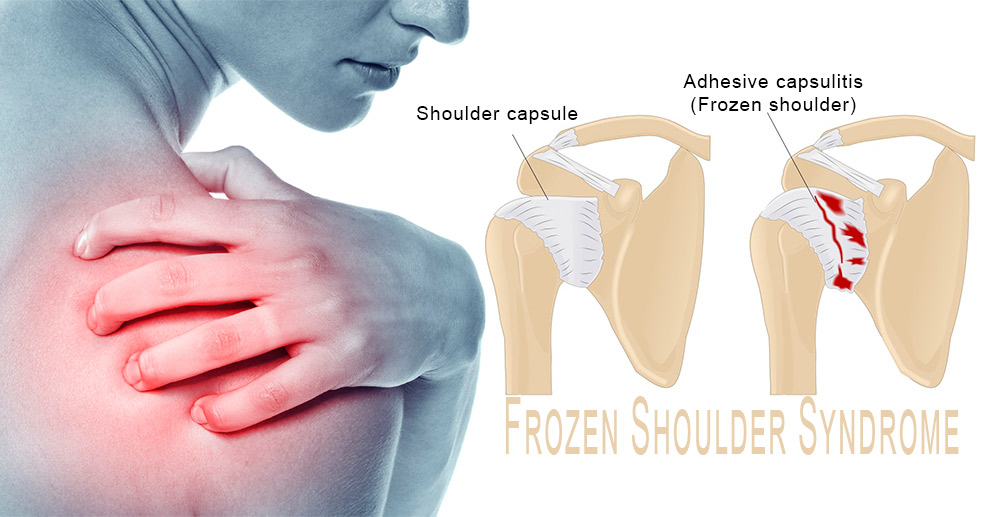
|
|
|
| Frozen shoulder, also known as adhesive capsulitis, is a condition characterized by global limitation of shoulder motion and shoulder pain. The condition occurs with inflammation initially, then progressively fibrosis happens, causing the capsule of shoulder joint become thickens and tightens. Over time, the joint’s range of motion becomes more limited, and simple movements like reaching overhead or behind the back can become painful.
|
|
|
|
| The exact cause of frozen shoulder remains unclear, but several factors may increase the risk of developing the condition. These include:
|
|
|
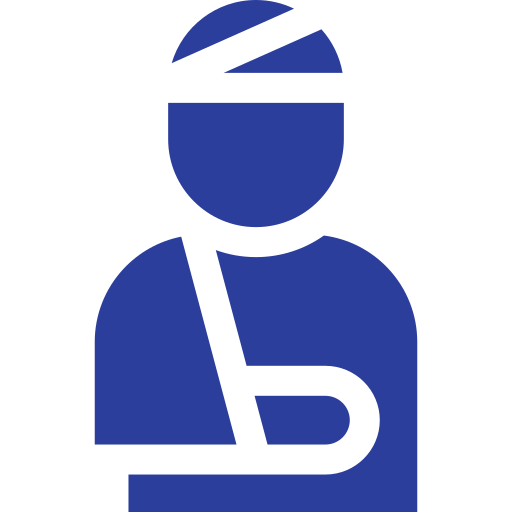
|

|
| Injury or Surgery
|

|
| An injury to the shoulder or a surgical procedure (such as rotator cuff surgery) that leads to a period of immobilization can trigger frozen shoulder.
|
|
|
|

|

|
| Age and Gender
|

|
| Frozen shoulder is more common in people aged 40 to 60, and women are more likely to develop it than men.
|
|
|
|
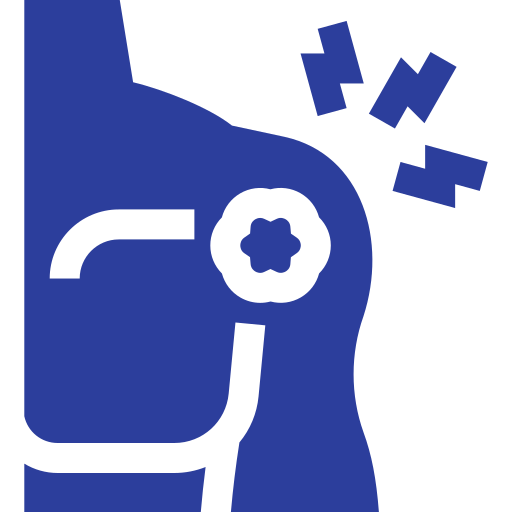
|

|
| Immobilization
|

|
| Prolonged periods of shoulder immobility, such as after an injury or surgery, can contribute to the development of frozen shoulder.
|
|
|
|

|

|
| Medical Conditions
|

|
| Certain medical conditions, including diabetes, heart disease, Parkinson's disease, and thyroid problems, have been linked to an increased risk of developing frozen shoulder. People with diabetes, for example, are two to three times more likely to experience frozen shoulder.
|
|
|
|
3 Main Stages of Frozen Shoulder
|
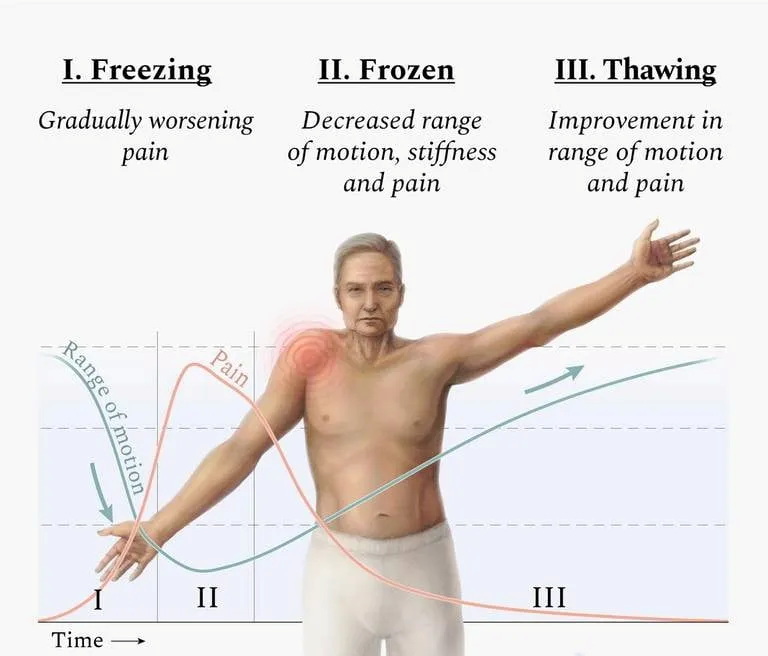
|
|
|
- Freezing stage(0-9 months): Pain increases, shoulder movement becomes more limited.
- Frozen stage(9-15 months): Pain may decrease, but the stiffness remains.
- Thawing stage(15-24 months): Movement gradually improves, though this can take time.
|
|
|
|
Treatment Options for Frozen Shoulder
|
| While frozen shoulder can be a frustrating and painful condition, most people recover over time. However, treatment is often necessary to help manage symptoms and speed up the recovery process. The goal of treatment is to reduce pain and improve mobility in the shoulder.
|
|
|
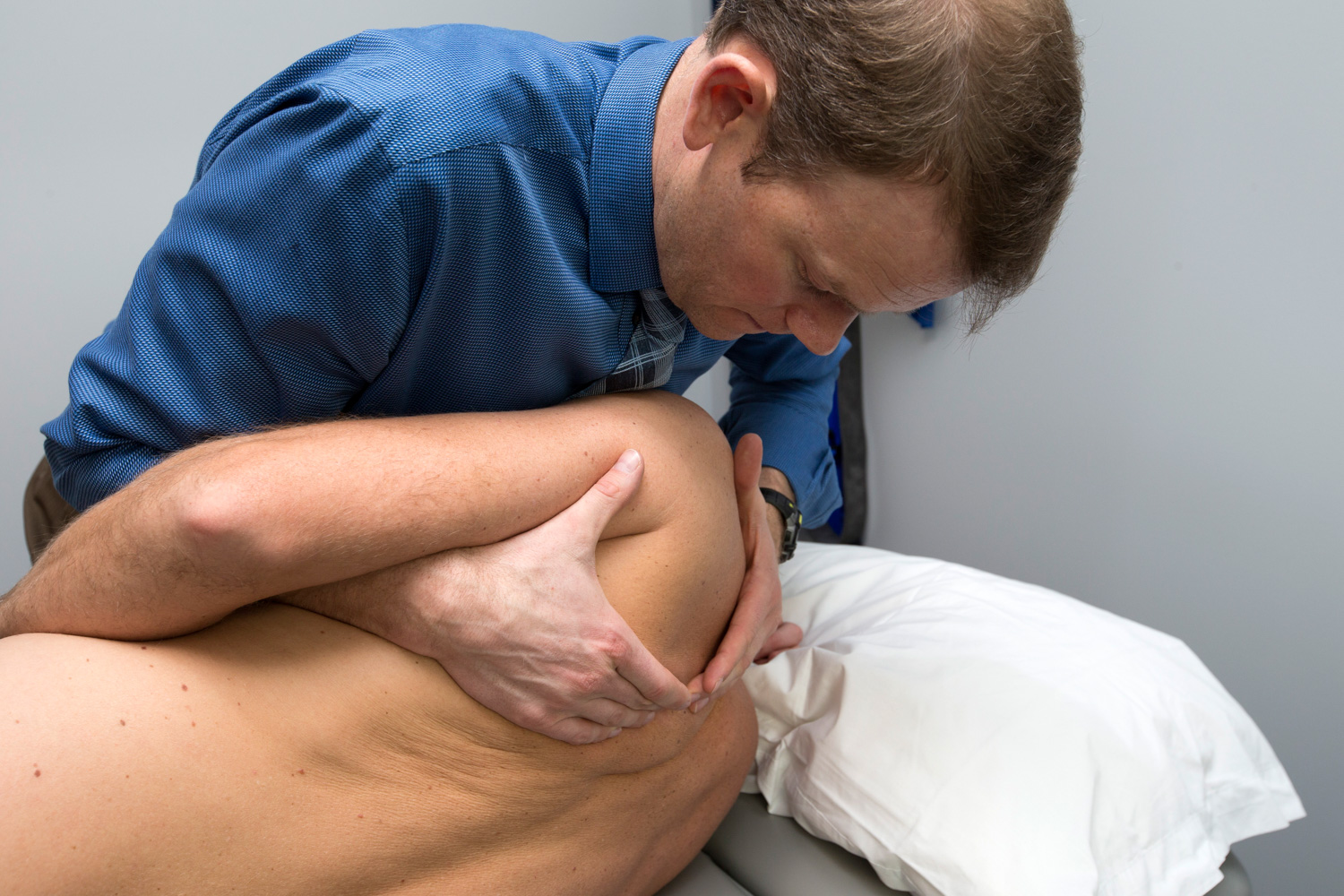
|

|
| Physical Therapy
|

|
| One of the most effective treatments for frozen shoulder is physical therapy. A physical therapist will guide you through specific exercises to improve your shoulder’s range of motion. This treatment helps prevent stiffness and encourages flexibility.
|
|
|
|

|

|
| Medications
|

|
| Nonsteroidal anti-inflammatory drugs (NSAIDs) like ibuprofen can help relieve pain and reduce inflammation.
|
|
|
|
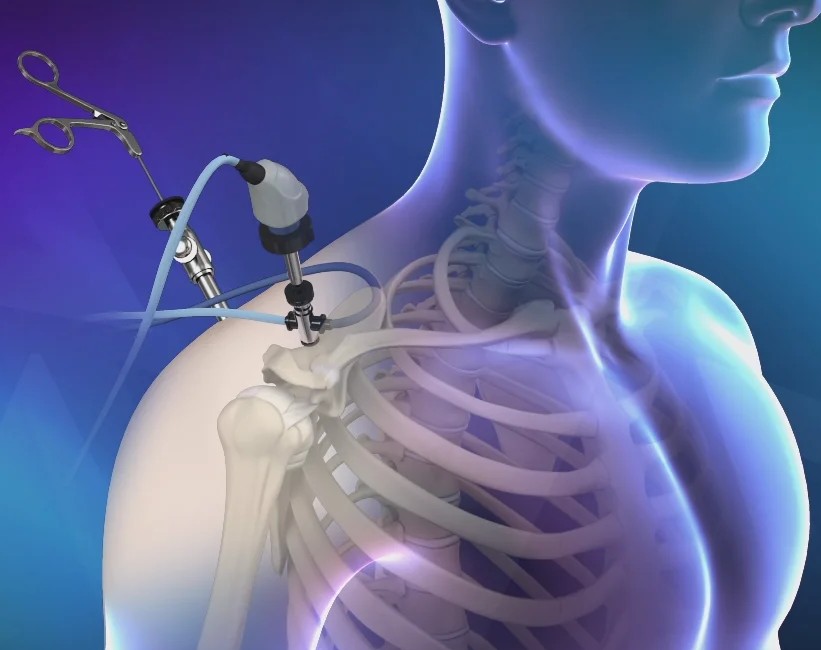
|

|
| Surgery
|

|
| If other treatments do not improve the condition, surgery may be considered.
|
|
|
|
|
| Frozen shoulder is a condition that can cause significant pain and immobility, but with the right treatment and rehabilitation, it is possible to regain full function of the shoulder. Early intervention through physical therapy and medication can significantly improve outcomes and reduce the time it takes for the shoulder to "thaw." If you suspect you have frozen shoulder or are experiencing persistent shoulder pain, it’s important to consult a healthcare provider to develop a tailored treatment plan. With patience and persistence, most people recover completely, regaining normal function and reducing the impact of the condition on daily activities.
|
|
|
References:
- St Angelo, J. M., & Fabiano, S. E. (2020). Adhesive Capsulitis. PubMed; StatPearls Publishing. https://www.ncbi.nlm.nih.gov/books/NBK532955/
- Frozen shoulder - Diagnosis and treatment - Mayo Clinic. (n.d.). Www.mayoclinic.org. https://www.mayoclinic.org/diseases-conditions/frozen-shoulder/diagnosis-treatment/drc-20372690
- Validate User. (n.d.). Jamanetwork.com. https://jamanetwork.com/journals/jamanetworkopen/fullarticle/2774247
|
|
|
Prepared By:
Ju Kah Yee
Physiotherapist Supervisor
Trust Physiotherapy Centre (Mount Austin Branch)
|